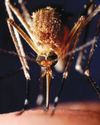GM food has been around for over 30 years, yet it still ignites heated debate. So is it safe, and should we allow it to grace our shelves?

For most people, Miami is either a sun-drenched holiday destination or the favoured location for US crime dramas. However, in 1983, it was forever written in the annals of science as the place where it was first announced that we could introduce specific genes (pieces of DNA) into plant cells, then generate whole plants with only a single altered characteristic. Before that, plant breeders had been confined to crossing together two parents and then screening the resulting plants for that rare individual that emerged with better properties. This process was by its nature hit and miss and it took several years before a new variety with the desired properties could be bred. Suddenly it became theoretically possible to make specific alterations to an existing variety with relative ease. Thus began the age of genetically modified (GM) or transgenic agriculture.
From that point onwards a race began, headed by US agricultural and agrochemical company Monsanto, to exploit this technology and develop novel varieties of crops. Understandably from a commercial perspective, the first targets were those predicted to generate the largest sales. The two dominant products were plants designed to be tolerant to herbicides – particularly the Monsanto product glycophosate – so weeds could be killed without harming crops, and those expressing toxin-encoding genes from the soil bacterium Bacillus thuringiensis (Bt) to give them resistance to certain insect pests. The strategy behind these approaches represented something of a revolution. In the period immediately after WWII, research investment focused solely on the discovery of new herbicides and insecticides. But now, scientists could achieve the same effect by modifying genes within the crops rather than inventing new chemicals to spray on them. The first GM crops came to the US market in 1996 and sales grew rapidly.
This story is from the {{IssueName}} edition of {{MagazineName}}.
Start your 7-day Magzter GOLD free trial to access thousands of curated premium stories, and 9,000+ magazines and newspapers.
Already a subscriber ? Sign In
This story is from the {{IssueName}} edition of {{MagazineName}}.
Start your 7-day Magzter GOLD free trial to access thousands of curated premium stories, and 9,000+ magazines and newspapers.
Already a subscriber? Sign In

World's First Malaria Vaccine
The World Health Organization’s director-general hails ‘historic moment’ as mass immunisation of African children begins

Is River Pollution Putting The Species In Jeopardy Again?
Ten years ago, it was jubilantly announced that o ers had returned to every county in England. But is river pollution putting the species in jeopardy again?

The Big Burnout
Long hours, low pay and a lack of appreciation — among other things — can make for a stressful workplace and lead to burnout. It’s something we should all be concerned about, because over half of the workforce reports feeling it

Putting Nature To Rights
More countries are enshrining the right to a clean environment into law. So if a company or government is impinging upon that right, you could take them to court

Mega Spaceship: Is It Possible For China To Build A Kilometre-Long Spacecraft?
Buoyed on by its successful Moon missions, China has launched a five-year study to investigate the possibility of building the biggest-ever spacecraft

Are We Getting Happier?
Enjoying more good days than bad? Feel like that bounce in your step’s getting bigger? HELEN RUSSELL looks into whether we’re all feeling more cheery…

“Unless the Japanese got the US off their backs in the Pacific, they believed they would face complete destruction”
Eighty years ago Japan’s surprise raid on Pearl Harbor forced the US offthe fence and into the Second World War. Ellie Cawthorne is making a new HistoryExtra podcast series about the attack, and she spoke to Christopher Harding about the long roots of Japan’s disastrous decision

Your Mysterious Brain
Science has mapped the surface of Mars and translated the code for life. By comparison, we know next to nothing about what’s between our ears. Over the next few pages, we ask leading scientists to answer some of the most important questions about our brains…

Why Do We Fall In Love?
Is it companionship, procreation or something more? DR ANNA MACHIN reveals what makes us so willing to become targets for Cupid’s arrow

Detecting the dead
Following personal tragedy, the creator of that most rational of literary figures, Sherlock Holmes, developed an obsession with spiritualism. Fiona Snailham and Anna Maria Barry explore the supernatural interests of Sir Arthur Conan Doyle